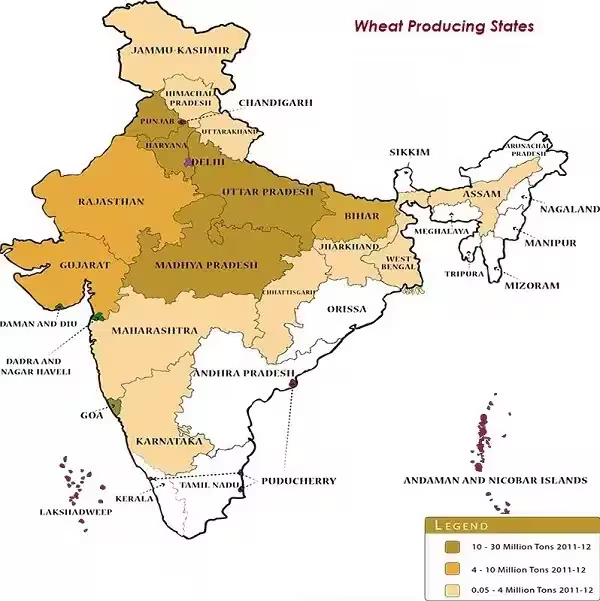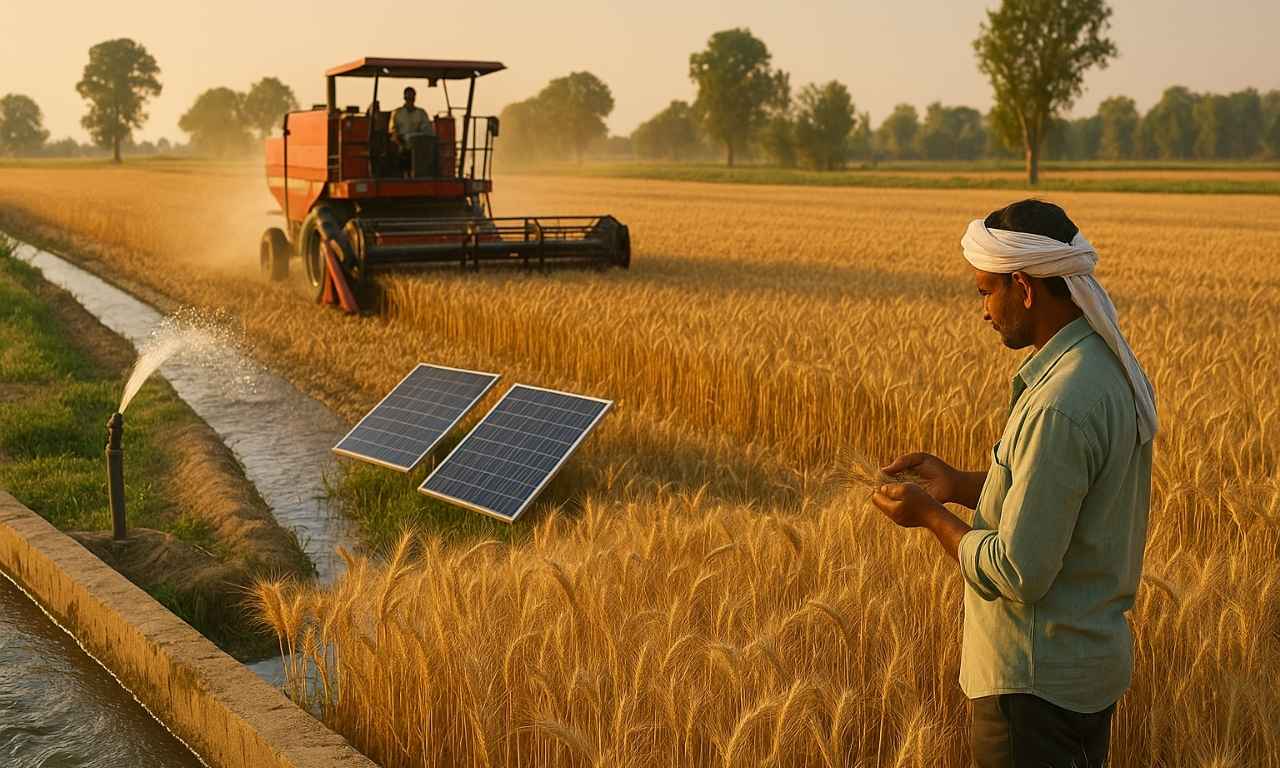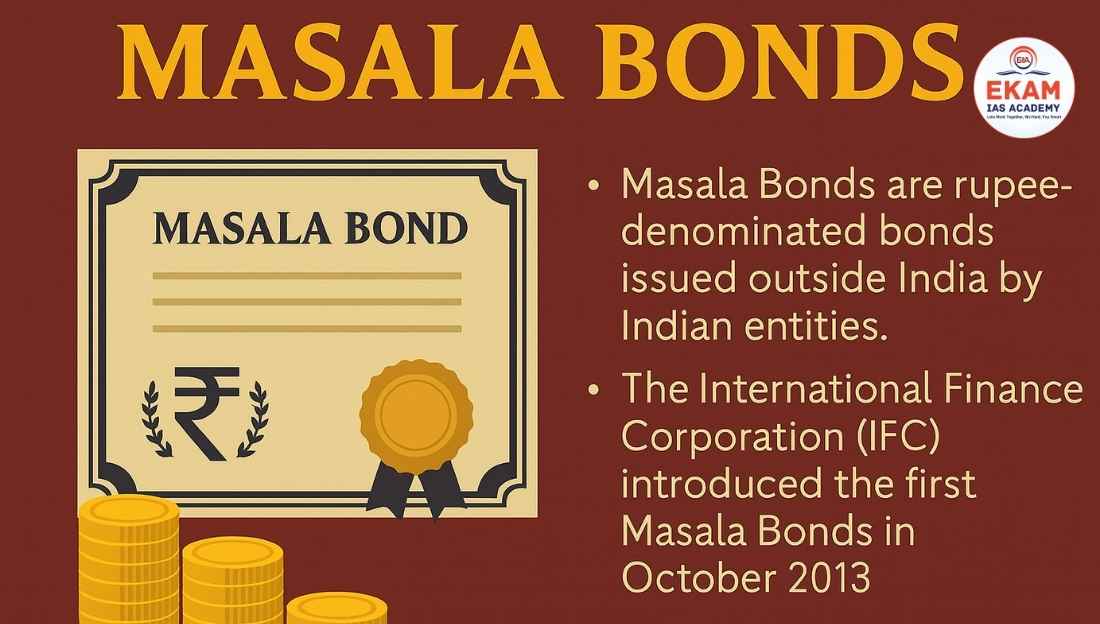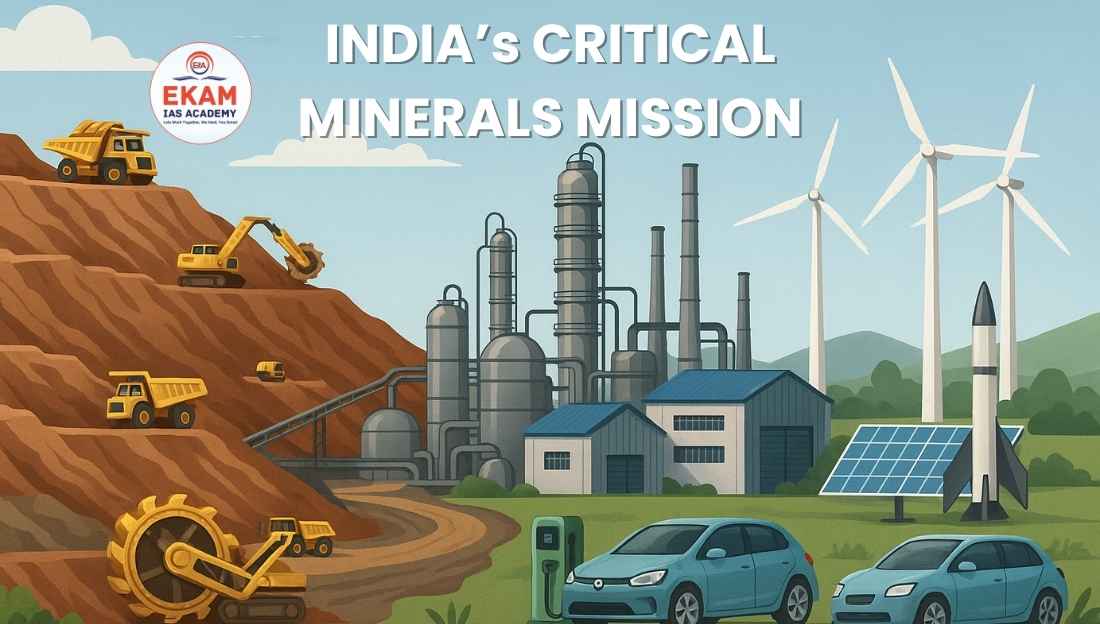India has reaffirmed its position as the second-largest wheat producer in the world, with new efforts to improve productivity through climate-smart agriculture, modern irrigation, and resilient seed varieties. The crop remains vital for national food security and farmer income, especially in northern India.
Introduction
- Wheat is India’s second most important food grain after rice. It plays a central role in ensuring food security, providing livelihoods to millions, and contributing significantly to the agricultural economy.
- The crop’s adaptability and nutritional value make it a cornerstone of India’s agricultural system, particularly in the Indo-Gangetic plains.

Production and Distribution
- India contributes significantly to global wheat supply, next only to China. The major producing regions are Punjab, Haryana, Uttar Pradesh, Madhya Pradesh, and Rajasthan.
- These areas benefit from fertile plains, canal irrigation, and high-yielding seed varieties developed during the Green Revolution.
- States like Bihar, Gujarat, and Maharashtra also grow wheat under irrigated conditions.
Importance of Wheat
- Food Security: Core part of the Public Distribution System (PDS) ensuring stable food supply.
- Nutrition: Provides essential nutrients vital for health and energy.
- Economic Value: Key contributor to farm income and national agricultural GDP.
- Employment: Engages millions of small and medium farmers across rural India.
- Export Potential: Surplus production opens opportunities for international trade.
Challenges
- Falling water tables due to excessive irrigation in north India.
- Soil degradation from continuous monocropping.
- Climate change leading to heat stress during grain filling.
- Small landholdings restricting mechanisation and efficiency.
- Need for diversification and resource-efficient technologies.
WHEAT
Wheat is one of the oldest cultivated grains and a major source of carbohydrates, proteins, iron, and B vitamins.
It is widely consumed in northern, western, and central India, especially in Punjab, Haryana, Uttar Pradesh, Madhya Pradesh, and Rajasthan. It forms the base of everyday foods like chapati, bread, and pasta, making it essential to India’s diet.
Climatic Requirements
- Wheat thrives in cool, dry weather and is primarily a Rabi crop, sown in winter and harvested in spring.
- Temperature: Around 10–15°C during sowing and 21–26°C at ripening.
- Rainfall: Needs 50–75 cm of evenly spread rainfall; excess moisture harms yield.
- Sunlight: Bright sunshine during ripening improves grain quality.
- Frost & hailstorms can severely damage crops during flowering.
Soil Conditions
- Best grown in well-drained loamy or clay-loam soils with good moisture retention.
- The Indo-Gangetic alluvial soils are most productive due to their fertility and irrigation support.
- Wheat tolerates neutral to slightly alkaline soils (pH 6.5–7.5) and requires less water than rice, making it suitable for semi-arid zones.
Conclusion
Wheat remains the backbone of India’s food economy. To sustain growth, India must adopt climate-resilient farming, precision irrigation, and sustainable soil practices. Strengthening research, infrastructure, and export capacity will secure the future of wheat cultivation in India.
This topic is available in detail on our main website.





